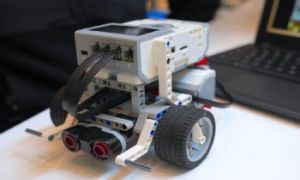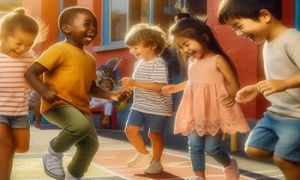In early childhood settings across Australia, the Early Years Learning Framework (EYLF) is more than a document; it’s a living, breathing presence in children’s play. When educators truly see the EYLF in action, they witness a tapestry of learning, relationships, and identity unfolding moment by moment. This article explores how the EYLF manifests through play and how educators can deepen their observations, documentation, and advocacy by tuning into its rhythms.
Play as Pedagogy: Where Learning Comes Alive
Children’s play is not separate from learning—it is learning. The EYLF positions play as central to children’s development, recognizing it as a context where agency, belonging, and meaning-making flourish. Whether it’s a toddler stacking blocks or a group of preschoolers negotiating roles in dramatic play, the EYLF’s learning outcomes pulse through their choices, gestures, and interactions.
Examples of EYLF Outcomes in Play
Outcome 1: Children have a strong sense of identity
| Play Example | EYLF Lens |
|---|---|
| 1. A child insists on being the “vet” in dramatic play every day | Developing agency and confidence in role identity |
| 2. A toddler clutches a familiar blanket during group time | Using transitional objects to feel secure and grounded |
| 3. A child corrects an educator: “I’m not a baby, I’m four!” | Asserting self-knowledge and autonomy |
| 4. A child draws their family and includes a pet who passed away | Expressing belonging and emotional memory |
| 5. A child chooses to play alone, building a quiet corner | Demonstrating self-awareness and emotional regulation |
| 6. A child proudly shows their name written in chalk | Celebrating emerging literacy and identity |
| 7. A child wears cultural dress-up clothes and explains their meaning | Affirming cultural identity and pride |
| 8. A child comforts a peer: “It’s okay, I used to cry too” | Showing empathy rooted in shared experience |
| 9. A child creates a superhero with their own name | Blending imagination with self-concept |
| 10. A child repeats a family phrase during pretend play | Integrating home language and identity into play |
Outcome 2: Children are connected with and contribute to their world
| Play Example | EYLF Lens |
|---|---|
| 1. Children collaborate to build a city with blocks | Practicing cooperation and shared decision-making |
| 2. A child invites a new peer into their game | Demonstrating inclusion and social responsibility |
| 3. Children sort recycling in the home corner | Engaging with sustainability and care for the environment |
| 4. A child mimics a parent voting in dramatic play | Exploring civic participation through symbolic play |
| 5. Children create a “kindness jar” for their room | Co-constructing community values |
| 6. A group negotiates turn-taking on the swing | Practicing fairness and perspective-taking |
| 7. A child brings in a cultural artifact to share | Strengthening cultural connectedness and respect |
| 8. Children role-play a protest march with signs | Expressing agency and collective voice |
| 9. A child helps a peer with a puzzle without being asked | Demonstrating empathy and contribution |
| 10. Children care for a class pet or garden | Building responsibility and interdependence |
Outcome 3: Children have a strong sense of well-being
| Play Example | EYLF Lens |
|---|---|
| 1. A child practices yoga poses during rest time | Exploring body awareness and calm |
| 2. Children create a “feelings corner” with sensory tools | Co-regulating emotions through play |
| 3. A child climbs a tree and calls out, “I did it!” | Building physical confidence and risk assessment |
| 4. A child uses playdough to express frustration | Channeling emotion through sensory expression |
| 5. A child says “no” when touched unexpectedly | Asserting bodily autonomy and safety |
| 6. Children create a “hospital” and care for dolls | Exploring health, empathy, and nurturing roles |
| 7. A child sings a self-made song to soothe themselves | Using music for emotional regulation |
| 8. A child asks for help after falling | Trusting relationships and help-seeking behaviors |
| 9. Children invent a “calm-down potion” in water play | Symbolic strategies for emotional wellbeing |
| 10. A child chooses to rest in a quiet nook | Honoring self-awareness and energy needs |
Outcome 4: Children are confident and involved learners
| Play Example | EYLF Lens |
|---|---|
| 1. A child tests how many blocks fit on a bridge before it collapses | Engaging in inquiry and problem-solving |
| 2. A child repeats a marble run design until it works | Showing persistence and experimentation |
| 3. Children mix colors to create new shades | Exploring cause and effect through creativity |
| 4. A child builds a pulley system in the sandpit | Applying STEM thinking in play |
| 5. A child asks, “What if we made it taller?” | Demonstrating curiosity and hypothesis testing |
| 6. Children create a treasure map and follow it | Planning, sequencing, and spatial awareness |
| 7. A child uses a stick to measure puddle depth | Innovating with tools and observation |
| 8. A child narrates their block construction process | Reflecting on learning and metacognition |
| 9. A group builds a cardboard rocket and “launches” it | Collaborative design and imaginative engineering |
| 10. A child adapts a game rule to include more players | Flexibility and inclusive problem-solving |
Outcome 5: Children are effective communicators
| Play Example | EYLF Lens |
|---|---|
| 1. A child uses gestures and signs to request a toy | Expressing needs through multimodal communication |
| 2. A child tells a story using puppets | Narrating with voice, character, and sequence |
| 3. Children create a menu and take orders in dramatic play | Using symbolic literacy in context |
| 4. A child draws a picture and says, “This is my dream” | Visual storytelling and emotional expression |
| 5. A child uses a home language word and explains it | Bilingual pride and language bridging |
| 6. Children invent a secret code for their game | Playing with language and meaning |
| 7. A child “reads” a familiar book to a peer | Recalling and retelling with confidence |
| 8. A child uses a walkie-talkie to give directions | Exploring technology and purposeful talk |
| 9. A child sings a song they made up | Musical communication and rhythm |
| 10. A child uses a photo to tell a story about their weekend | Visual literacy and narrative construction |
To “see” the EYLF in play is to observe with purpose. It means noticing the subtle cues—a glance, a pause, a shift in tone—and interpreting them through the lens of the framework. Educators become researchers, storytellers, and advocates, capturing the richness of children’s learning in ways that honour their voice and context.
Reflective Questions for Educators
Here’s a fresh, emotionally intelligent set of reflective questions designed to deepen documentation, amplify advocacy, and illuminate the EYLF in children’s play.
Seeing Learning in Play
-
-
What learning outcome is unfolding here—and how do I know?
-
What symbolic or sensory elements are present in this play?
-
How does this moment reflect the child’s emotional world or cultural identity?
-
What theories of learning or development are visible in this interaction?
-
What does this play episode reveal about the child’s strengths, interests, or challenges?
Emotional Intelligence & Co-Regulation
-
How did I respond to the child’s emotional cues in this moment?
-
What strategies did the child use to regulate themselves—and how did I scaffold that?
-
How do I honour children’s emotional safety in my documentation?
-
What language or tone did I use to support the child’s well-being?
-
How might this moment be interpreted differently by families or colleagues?
Cultural & Symbolic Richness
-
What cultural knowledge or symbolism is embedded in this play?
-
How do I make space for children’s home languages, rituals, or stories?
-
What assumptions might I be making—and how can I challenge them?
-
How does this moment reflect the child’s sense of belonging or identity?
-
What opportunities exist to co-design culturally responsive documentation?
Agency, Voice & Advocacy
-
How did the child express agency or make choices in this moment?
-
What power dynamics were present—and how did I navigate them?
-
How can I document this moment to advocate for the child’s rights and dignity?
-
What language will amplify the child’s voice in my records or submissions?
-
How does this moment support our broader campaign for sector reform?
Practice & Pedagogy
-
What intentional teaching strategies did I use—and were they effective?
-
How did I balance structure with spontaneity in this play episode?
-
What does this moment teach me about my own biases or habits?
-
How might I adapt the environment to extend this learning?
-
What documentation format best captures the richness of this moment?
-
From Observation to Advocacy: Making the Invisible Visible
In a sector under pressure, seeing the EYLF in play is a radical act. It affirms that children’s learning is complex, relational, and worthy of deep respect. When educators document play with emotional intelligence and sector-savvy language, they create powerful tools for advocacy—showing policymakers, families, and communities what quality looks like.
Strategies for Sector Advocacy
- Use emotionally resonant language in documentation to highlight the depth of learning.
- Embed EYLF language in visual displays, newsletters, and submissions.
- Co-design symbolic documentation tools that make learning visible across diverse contexts.
- Share play-based stories that reflect cultural richness, inclusion, and well-being.
The EYLF is not static—it evolves with children, educators, and communities. Seeing it in play means embracing its fluidity, its symbolism, and its power to restore dignity to early childhood practice. As educators, we are not just implementing a framework; we are living it, shaping it, and advocating through it.
Further Reading
How Children Achieve EYLF Learning Outcomes Version 2.0
Linking Theories To The EYLF
How Educators Promote EYLF Outcomes 2.0 -
Educators' Role In Play
Spontaneous Play In Early Childhood
The Value Of Play


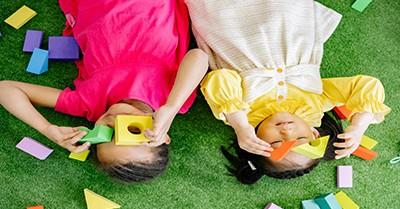
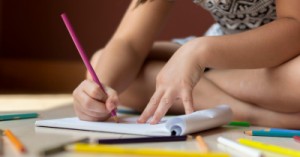

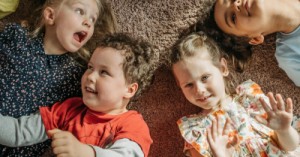
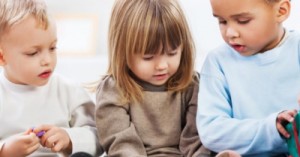
 Here is the list of the EYLF Learning Outcomes that you can use as a guide or reference for your documentation and planning. The EYLF
Here is the list of the EYLF Learning Outcomes that you can use as a guide or reference for your documentation and planning. The EYLF The EYLF is a guide which consists of Principles, Practices and 5 main Learning Outcomes along with each of their sub outcomes, based on identity,
The EYLF is a guide which consists of Principles, Practices and 5 main Learning Outcomes along with each of their sub outcomes, based on identity, This is a guide on How to Write a Learning Story. It provides information on What Is A Learning Story, Writing A Learning Story, Sample
This is a guide on How to Write a Learning Story. It provides information on What Is A Learning Story, Writing A Learning Story, Sample One of the most important types of documentation methods that educators needs to be familiar with are “observations”. Observations are crucial for all early childhood
One of the most important types of documentation methods that educators needs to be familiar with are “observations”. Observations are crucial for all early childhood To support children achieve learning outcomes from the EYLF Framework, the following list gives educators examples of how to promote children's learning in each individual
To support children achieve learning outcomes from the EYLF Framework, the following list gives educators examples of how to promote children's learning in each individual Reflective practice is learning from everyday situations and issues and concerns that arise which form part of our daily routine while working in an early
Reflective practice is learning from everyday situations and issues and concerns that arise which form part of our daily routine while working in an early Within Australia, Programming and Planning is reflected and supported by the Early Years Learning Framework. Educators within early childhood settings, use the EYLF to guide
Within Australia, Programming and Planning is reflected and supported by the Early Years Learning Framework. Educators within early childhood settings, use the EYLF to guide When observing children, it's important that we use a range of different observation methods from running records, learning stories to photographs and work samples. Using
When observing children, it's important that we use a range of different observation methods from running records, learning stories to photographs and work samples. Using This is a guide for educators on what to observe under each sub learning outcome from the EYLF Framework, when a child is engaged in
This is a guide for educators on what to observe under each sub learning outcome from the EYLF Framework, when a child is engaged in The Early Years Learning Framework describes the curriculum as “all the interactions, experiences, activities, routines and events, planned and unplanned, that occur in an environment
The Early Years Learning Framework describes the curriculum as “all the interactions, experiences, activities, routines and events, planned and unplanned, that occur in an environment
